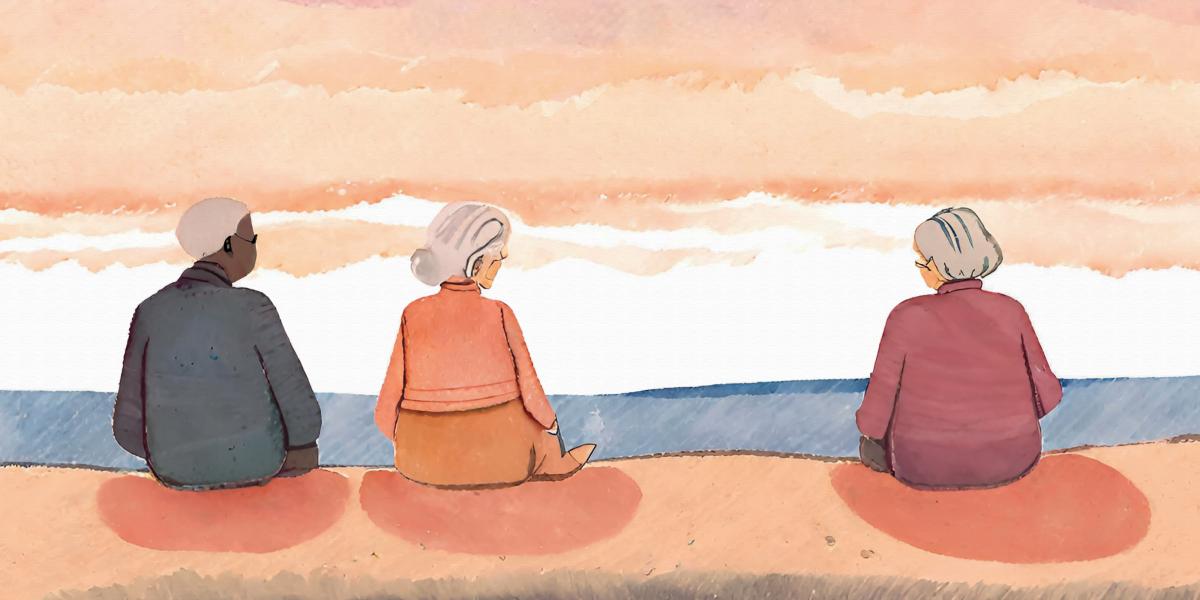For Healthy Aging, Stay Connected
A growing body of research shows the importance of addressing loneliness and social isolation.
Too much time alone can take a toll on the mind—and for older adults, the consequences can be particularly severe.
“Individuals who experience isolation have higher levels of negative cardiovascular outcomes, functional limitations, cognitive health, and a 30% increased mortality risk as indicated in certain studies,” says Thomas Cudjoe, MD, MPH, an assistant professor at the Johns Hopkins School of Medicine. Indeed, increased risk of mortality from social isolation has been compared to smoking 15 cigarettes a day.
At the societal level, roughly 1 in 4 people over 65 are socially isolated, which could potentially affect the health and well-being of millions of Americans, according to research from Cudjoe and colleagues. Another cost: Medicare spends $6.7 billion annually in added cost of care for socially isolated older Americans, according to a 2017 AARP report.
While the COVID-19 pandemic may have forced the issue of social isolation onto everybody’s radar, it has been a long-standing problem for older Americans. As we grow older, it can be all too easy to lose touch with both family and the friends we’ve acquired over a lifetime. Aging also leads to inevitable physical decline, including disabilities that can make it more difficult to get out of the house and engage with the outside world.
Hearing loss, for example, can make communication challenging and can take the pleasure out of activities like dining out or going to the movies, cutting off important avenues of social stimulation “Two-thirds of older adults have age-related hearing loss,” says Alison Huang, PhD ’22, MPH ’14, a senior research associate in Epidemiology. A 2024 study by Huang and colleagues found that loss of hearing is associated with a 28% greater risk of social isolation over time.
Cudjoe points out that other factors can further exacerbate this problem. “I’m particularly interested in how poverty influences social connections, and how this burden potentially is different than for people who are higher income,” he says.
Both loneliness (the subjective feeling of being isolated) and social isolation (the objective lack of social contact) can have negative impacts on health and longevity. Some effects are indirect, arising from reduced access to or utilization of health care services by isolated individuals.
“Someone who is socially isolated, you could envision might have more difficulty keeping their prescriptions refilled all the time, or more difficulty accessing the health care system if they’re dependent on others for transportation,” says Cynthia Boyd, MD, MPH, director of the Division of Geriatric Medicine and Gerontology at the School of Medicine and professor in Health Policy and Management and Epidemiology.
In a 2018 study, Boyd, Cudjoe, and others examined the impact of self-reported loneliness on the long-term health of more than 2,000 patients who had previously been hospitalized for heart failure. The study found that people experiencing high levels of loneliness were at more than three-fold greater risk of death and 68% greater risk of hospitalization over the course of a year than those with low levels of loneliness.
Mental health is also a casualty, and isolation can heighten the risk of depression, anxiety, and cognitive decline. In a 2022 study of dementia, Cudjoe and colleagues tracked more than 5,000 elderly Americans over the course of nine years, and found that those experiencing objectively measured social isolation faced a nearly 30% greater risk of developing dementia during this span. Boyd sees a potential vicious circle here. “Having cognitive impairment may then make it harder for you to maintain connections or get feedback from things that might keep you from feeling lonely,” she says. This could in turn further exacerbate the progression of cognitive decline.
Creating effective interventions for loneliness and isolation remains a challenge, but there may be greater opportunities to intervene when isolation is directly tied to some form of disability.
For example, Huang says that relatively few hearing-impaired adults—between 10% and 20%—use hearing aids, but a clearer demonstration between auditory function and mental health may help motivate people to seek treatment. “I think it’s an interesting way of thinking about isolation interventions,” says Huang, who is now in the midst of a clinical trial to assess whether treatments for hearing-impairment help preserve cognitive health in older adults. She also points out that the design of more accommodating environments—for example, restaurants and cafes with walls that dampen noise rather than echoing and amplifying it—might offer more welcoming environments for hearing-impaired people to socialize.
Another potential strategy involves “social prescriptions,” in which clinicians match people with group activities or help them coordinate opportunities for regular interaction with other people, either in-person or virtually via platforms like Zoom. But there are limited data demonstrating benefits from such social prescriptions, and their implementation requires careful evaluation of why a given individual feels isolated and what kinds of treatments are accessible and enjoyable to them. “We really have to have a comprehensive and holistic approach,” says Boyd.
Cudjoe agrees, and believes it is important to not approach isolation and loneliness as monolithic problems in the elderly community, but instead to work with individuals to identify and meet their needs. In his view, this includes educating both clinicians and the general public about the importance of connection, and designing environments where patients can readily obtain the level of social connection that they need and want in their lives. “We shouldn’t have a paternal or authoritarian kind of approach to this, but support people in the goals that they have,” says Cudjoe.
